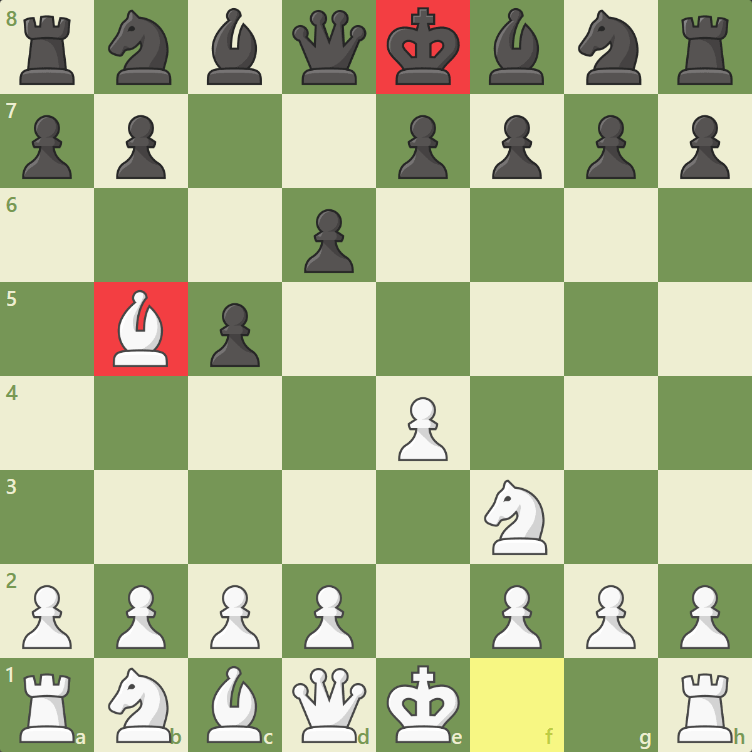A situation in chess where the opposing king is under direct attack and must respond to avoid capture.

Introduction
Check is one of the most fundamental concepts in chess. It occurs when a player’s king is under direct attack from an opponent’s piece, requiring an immediate response to remove the threat. While it may seem like a simple rule, the concept of check has shaped countless legendary games, influenced strategic thinking, and even inspired famous checkmating patterns.
Where did the term originate? How have great players used checks to their advantage? And why is understanding check crucial for improving at chess? This article explores the history, significance, and tactical use of checks in the game.
1. The History of Check
The idea of check dates back to the origins of chess in Chaturanga, an ancient Indian game from the 6th century. In Persian chess (Shatranj), when a king was attacked, players would declare “Shāh!”, meaning « King! »—the origin of the modern word “Check”.
Evolution of the Rule
- In early versions of chess, ignoring check was sometimes allowed, leading to different rule sets.
- By the 15th century, modern chess rules standardized check as a mandatory move restriction, meaning a player must escape check on their turn.
- The term “Checkmate” evolved from the Persian phrase “Shāh Māt”, meaning « The King is helpless ».
2. Types of Checks and Their Tactical Uses
2.1 Simple Check
A basic check occurs when a piece directly attacks the king. This can force an opponent to waste a move defending, buying time for an attacker.
2.2 Double Check
A double check occurs when two pieces attack the king simultaneously, often as a result of a discovered check. This is one of the most powerful checks in chess, as the only way to escape is for the king to move.
Example:
- Knight moves, uncovering an attack by a queen or rook, delivering a devastating double check.
2.3 Discovered Check
A discovered check happens when one piece moves, uncovering a check from another piece behind it.
Example:
- A bishop moves, revealing a check from a rook.
- This allows the moving piece to create additional threats elsewhere.
2.4 Perpetual Check
Perpetual check is a drawing tactic where a player continuously checks the opponent’s king, preventing them from escaping or making progress. This is a common defensive resource in losing positions.
2.5 Zugzwang Check
A check that forces the opponent into Zugzwang, meaning every available move weakens their position or leads to checkmate.
3. Legendary Players and Famous Uses of Check
Many of history’s greatest chess players have used checks to execute brilliant tactical sequences.
Bobby Fischer
Fischer often used checks to gain tempo, forcing his opponent into unfavorable positions. His tactical vision allowed him to use discovered and double checks effectively.
Garry Kasparov
Kasparov was famous for using checks as an attacking weapon, constantly pressing his opponents into defensive situations.
Magnus Carlsen
Carlsen often employs strategic checks to improve his position, sometimes forcing the opponent’s king into a worse endgame.
4. Why Understanding Check Is Crucial
Controlling the Game
Recognizing check patterns helps dictate the flow of a game and forces the opponent into reactive play.
Defending Against Attacks
A strong player understands not just how to deliver checks, but also how to escape them efficiently.
Creating Tactical Opportunities
Mastering different types of checks leads to stronger combinations, allowing for:
- Checkmate patterns (Boden’s Mate, Arabian Mate, etc.).
- Defensive resources like perpetual check.
- Brilliant sacrifices that lead to forced mates.
5. Conclusion
Understanding check is fundamental to chess strategy, from basic moves to world-class combinations. Whether it’s a simple check to gain tempo, a double check to force the king into the open, or a perpetual check to save a game, mastering this concept is key to improving your tactical and strategic play.
By studying famous games and practicing different check patterns, players can sharpen their board vision and increase their overall chess strength.

